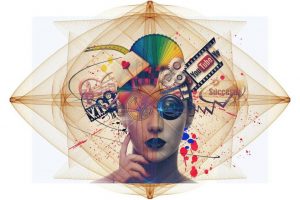Author: Dr. Aaron Nichols
Excel Neuro-Optometric Clinic
Concussions are one of the most complex injuries to treat, but with a team approach of a range of doctors, optimal results can be achieved.
What is a concussion?
A concussion can occur from an injury to the head or neck, and cause diffuse damage to the axons of the nerves in the brain.
When injury occurs, the axons swell and the signals across the brain are muddled. With this diffuse injury, problems can arise in many areas, including the vestibular, motor, cognitive and/or visual systems.
The most common type of concussion occurs when the patient is conscious throughout the entire event.
Case study
Recently, a mid-fifty year old, female athlete presented in our clinic after sustaining a concussion. She had many symptoms, including photophobia (light sensitivity), difficulty with near work (including reading), trouble riding in a car, dizziness, blurred vision, and many more lifestyle disruptions.
She completed a program of vestibular therapy prior to visiting my clinic, though she claimed the program did not help much.
If you have had a brain injury, contact an eye doctor near you, who can diagnose and treat any underlying visual conditions.
SEE RELATED: What Is Syntonic Phototherapy?
Convergence Insufficiency
Based on an initial examination, she was diagnosed with convergence insufficiency, which can be found in over 50 percent of patients with vision issues following a concussion. I recommended in-office vision therapy and optometric phototherapy (syntonics).
Once we began therapy, it became apparent that there was more involved than just her visual system.
She had increasing difficulty rotating her head side-to-side while performing eye tracking work—indicating a vestibular issue. With knowledge of the visual-vestibular system, and how the eyes communicate with the brain, it was apparent that she needed to see a vestibular therapist who also has experience in treating patients following a concussion.
The vestibular therapist noted that she would benefit from more vestibular therapy, and also recommended a rehabilitation facility that focuses on treating athletes that have suffered a concussion.
Following this recommendation, a team approach was established to ensure that the optimum results were achieved. Between my clinic and the referrals, we have been in constant communication, and work in collaboration to care for our patient.
As we began to work with her, we noted an improvement in both her therapy results and the significant reduction in her symptoms. She was able to begin higher level convergence activities, and even began performing head rotation activities with visual guidance.
Why is a team approach important?
It is important to create a multi-disciplinary team approach to ensure that the patient receives the best care possible.
Many neuro-optometric rehabilitation optometrists know, or have worked with, other professionals, and have built excellent relationships with them. This coordination of care when dealing with treating a concussion is key in order to ensure that there are no boundaries to any one therapy.
In my particular case, utilizing vestibular therapy and vision therapy was essential to the rehabilitation for our patient. It is common to be enrolled in many therapies at the same time.
If you are having symptoms, consider contacting a neuro-optometric rehabilitation optometrist as part of your journey towards recovery.
LEARN MORE: Guide to Neuro-Optometry
Schedule an appointment with an eye doctor for a comprehensive eye exam, and to discuss any questions you may have about vision therapy or syntonics.


